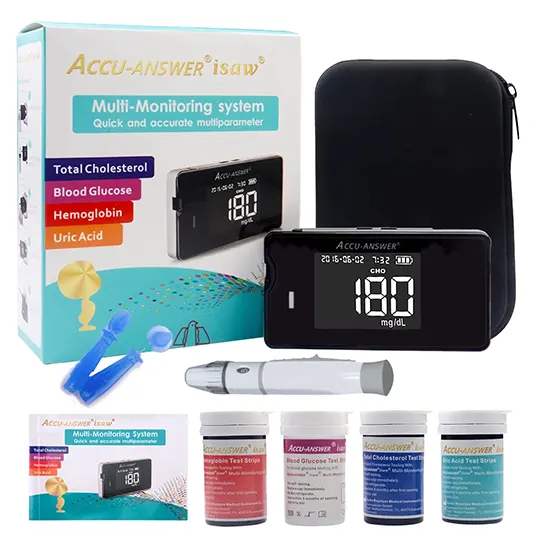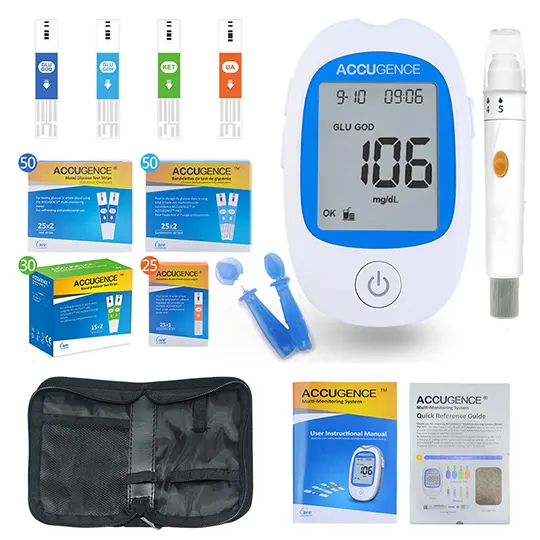phenytoin (Dilantin, Dilantin 125, Phenytek)
Dosing and uses of Dilantin, Phenytek (phenytoin)
Adult dosage forms and strengths
capsule, immediate-release
- 30mg
- 100mg
capsule, extended-release
- 100mg
- 200mg
- 300mg
tablet, chewable
- 50mg
oral suspension
- 125mg/5mL
injectable solution
- 50mg/mL
Seizures
Status epilepticus
- Load 10-15 mg/kg or 15-20 mg/kg at 25-50 mg/min, THEN
- Maintenance: 100 mg IV/PO q6-8hr PRN
- Administer IV slowly; not to exceed 50 mg/min
Anticonvulsant
- Tablet
- 100 mg PO TID
- Maintenance: 300-400 mg/day; increase to 600 mg/day if necessary
- May adjust dose no sooner than 7-10 day intervals when indicated
- Suspension
- 125 mg PO TID, initially
- Increase to 625 mg/day if necessary
- May adjust dose no sooner than 7-10 day intervals when indicated
- Extended release
- Loading dose: 1 g divided into 3 doses (400, 300, 300 mg) administered at 2 hr intervals; initiate dosage 24 hr after loading dose
- Loading dose not for administration to patients with a history of renal or hepatic disease; reserve for patients who require rapid steady serum levels, when IV administration not desirable, and for patients in a clinic or hospital setting where phenytoin levels can be closely monitored
- Treatment (naive): 100 mg PO TID initially
- May adjust dose no sooner than 7-10 day intervals
- Therapeutic range: 10-20 mcg/L (total) or 1-2 mcg/L free drug
Pediatric dosage forms and strengths
capsule, immediate-release
- 30mg
- 100mg
capsule, extended-release
- 100mg
- 200mg
- 300mg
tablet
- 50mg
oral suspension
- 125mg/5mL
injectable solution
- 50mg/mL
Status Epilepticus
15-20 mg/kg IV in single or divided dose; if necessary may administer additional dose of 5-10 mg/kg 10 min after loading dose
Maintenance: 4-8 mg/kg/day IV divided twice daily
Control of Tonic-Clonic and Complex Partial Seizures
Initial dosage
- Neonates: 5 mg/kg/day in 2 divided doses
- 6 months to 16 years: 5 mg/kg/day in 2-3 divided doses
Neonates (<28 days)
- Initial: 5-8 mg/kg/day IV/PO divided q8-12hr
Age-based maintenance dose
- 6 months-4 years: Usual range, 8-10 mg/kg/day IV/PO divided two to three times daily
- 4-7 years: Usual range, 7.5-9 mg/kg/day IV/PO divided two to three times daily
- 7-10 years: Usual range, 7-8 mg/kg/day IV/PO divided two to three times daily
- 10-16 years: Usual range, 6-7 mg/kg/day IV/PO divided two to three times daily
Anticonvulsant (Nonemergent)
Children and adolescents
Immediate release
- Tablet and suspension
- 5 mg/kg/day PO in 2-3 divided doses, initially; may make dose adjustments no sooner than 7-10 day intervals
- Maintenance: 4-8 mg/kg/day PO; not to exceed 300 mg/day; higher doses may be considered in infant and young children (range: 8-10 mg/kg/day in divided doses)
Extended release
- 5 mg/kg/day PO, initially in 2-3 equally divided doses; may adjust dose no sooner than 7-10-day intervals
- Maintenance: 4-8 mg/kg/day PO not to exceed 300 mg/day
Dosing Considerations
<6 years: Potential toxic dose, 20 mg/kg
Therapeutic range: 10-20 mcg/L (total) or 1-2 mcg/L free drug
ALWAYS administer IV slowly; not to exceed 1-3 mg/kg/min
Dilantin, Phenytek (phenytoin) adverse (side) effects
Frequency not defined
Drowsiness
Fatigue
Ataxia
Irritability
Headache
Restlessness
Slurred speech
Nervousness
Nystagmus
Dizziness
Vertigo
Dysarthria
Paresthesia
Rash
Pruritus
Gingival hyperplasia (pediatric patients)
Ataxia
Paradoxical seizure
Drug withdrawal seizure
Diplopia
Psychosis (high dose)
Toxic amblyopia
Encephalopathy
AV conduction disorder
Ventricular fibrillation
Nausea
Vomiting
Constipation
Diarrhea
Megaloblastic (folate-deficiency) anemia
Hypocalcemia
Hepatotoxicity
Hypertrichosis
Lymphadenopathy
Purple glove syndrome
Rash
Allergic reactions in the form of rash or, rarely, more serious forms (drug reaction with eosinophilia and systemic symptoms, or DRESS) or anaphylaxis
Purpuric rash
Toxic epidermal necrolysis
Bullous dermatosis
Coarsening of facial features
Periarteritis nodosa
Immunoglobulin abnormalities
Altered taste sensation, including metallic taste
Peyronie disease
IV >50 mg/min
- CNS depression
- Cardiovascular collapse
- Hypotension
Rare
- Dyskinesia
- Ophthalmoplegia
- Nephrotoxicity
- Stevens-Johnson syndrome
- Lupus erythematosus
- Rickets
- Osteomalacia
Warnings
Black box warnings
Cardiovascular risk associated with rapid infusion rates
- Risk of hypotension and arrhythmias with infusion rates that exceed 50 mg/min in adults and 1-3 mg/kg/min (or 50 mg/min, whichever is slower) for pediatric patients
- Careful cardiac monitoring is needed during and after IV administration
- These events have also been reported at or below 50 mg/min
- Reduce infusion rate or discontinuation may be needed
Contraindications
Hypersensitivity
Sinus bradycardia
Sinoatrial block
Second and third degree A-V block
Adams-Stokes syndrome
Concurrent use with delavirdine
Cautions
Erratically absorbed when administered IM, so this route should be used as a last resort
ONLY extended-release capsules should be used for once-daily dosing regimens
Decreased bone mineral density reported with chronic use
Phenytoin induces hepatic metabolizing enzymes, which may enhance metabolism of vitamin D and decrease vitamin D levels, leading to vitamin D deficiency, hypocalcemia, and hypophosphatemia; consideration should be given to screening with bone-related laboratory and radiological tests as appropriate and initiating treatment plans according to established guidelines
Use caution in cardiovascular disease, hypoalbuminemia, hepatic impairment, hypothyroidism, or seizures
Associated with exacerbation of porphyria; exercise caution when used in patients with this disease
Extensively bound to serum plasma proteins and is prone to competitive displacement
Acute alcoholic intake may increase phenytoin serum levels, while chronic alcoholic use may decrease serum levels
Metabolized by hepatic cytochrome P450 enzymes CYP2C9 and CYP2C19, and is particularly susceptible to inhibitory drug interactions because it is subject to saturable metabolism; if metabolism inhibited, may produce significant increases in circulating phenytoin concentrations and enhance the risk of drug toxicity
Risk of hypotension and arrhythmias with infusion rates that exceed 50 mg/min in adults and 1-3 mg/kg/min (or 50 mg/min, whichever is slower) for pediatric patients
Hematologic effects reported with use including agranulocytosis, leukopenia, pancytopenia, neutropenia, thrombocytopenia, and anemias
Phenytoin is a potent inducer of hepatic drug-metabolizing enzymes
Increased risk of suicidal thoughts or behavior reported
May render OCPs ineffective because of induction of hepatic metabolism
Risk of gingival hyperplasia
If rash occurs including toxic epiderma necrolysis (TEN) and Stevens-Johnson syndrome (SJS reported; onset of symptoms is usually within 28 days, but can occur later; phenytoin should be discontinued at first sign of a rash, unless rash is clearly not drug-related; if signs or symptoms suggest SJS/TEN, discontinue therapy permanently and consider alternative therapy; evaluate for signs and symptoms of DRESS, also known as multiorgan hypersensitivity
Local toxicity (purple glove syndrome) that includes edema, discoloration, and pain distal to the site of injection has been reported following peripheral IV injection; may or may not be associated with extravasation; this syndrome may not develop for several days after injection
IV infusion not recommended by many due to poor solubility and risk of crystal formation; others state it is doable with right solvent and concentration
Good for automatic and reentrant arrhythmias, not PSVT's
Phenytoin was listed by the FDA as one of the drugs to monitor after having identified potential signs of serious risks or new safety information in the agency's Adverse Event Reporting System (AERS) database during the last 3 months of 2011
Drug interactions resulting in decreased effectiveness of nondepolarizing neuromuscular blocking agents have been reported
The FDA has not suggested that clinicians stop prescribing any drugs on the watch list or that patients stop taking them; it has, however, advised that patients with questions about watch-list drugs discuss them with their clinician
Antiepileptic drugs should not be abruptly discontinued because of the possibility of increased seizure frequency, including status epilepticus
Hyperglycemia, resulting from drug's inhibitory effect on insulin release reported; phenytoin may also raise serum glucose level in patients diabetes mellitus; use caution
Not indicated for seizures resulting from hypoglycemia or other metabolic causes; appropriate diagnostic procedures should be performed as indicated
Not effective for absence seizures; if tonic-clonic and absence seizures present, combined drug therapy needed
Sustained serum levels of phenytoin above optimal range may produce confusional states referred to as "delirium", "psychosis", or "encephalopathy", or rarely irreversible cerebellar dysfunction; accordingly, at the first sign of acute toxicity, plasma levels are recommended; dose reduction of phenytoin therapy is indicated if plasma levels are excessive; termination recommended if symptoms persist
The lethal dose in pediatric patients is not known; in adults, the lethal dose is estimated to be 2- 5 g; initial symptoms include nystagmus, ataxia, and dysarthria; other signs are tremor, hyperreflexia, lethargy, slurred speech, blurred vision, nausea, and vomiting; death is due to respiratory and circulatory depression
Pregnancy and lactation
Pregnancy category: d
Prenatal exposure to phenytoin may increase the risks for congenital malformation and other adverse development outcomes; risk of fetal hydantoin syndrome
An increase in seizure frequency may occur during pregnancy; periodic measurement of plasma phenytoin concentrations may be valuable to make appropriate dosage adjustments; postpartum restoration of original dosage will probably be indicated
Consider vitamin K supplementation for 1 month before birth
Lactation: Excreted in breast milk; not recommended
Pregnancy categories
A: Generally acceptable. Controlled studies in pregnant women show no evidence of fetal risk.
B: May be acceptable. Either animal studies show no risk but human studies not available or animal studies showed minor risks and human studies done and showed no risk.
C: Use with caution if benefits outweigh risks. Animal studies show risk and human studies not available or neither animal nor human studies done.
D: Use in LIFE-THREATENING emergencies when no safer drug available. Positive evidence of human fetal risk.
X: Do not use in pregnancy. Risks involved outweigh potential benefits. Safer alternatives exist.
NA: Information not available.
Pharmacology of Dilantin, Phenytek (phenytoin)
Mechanism of action
Promotes Na+ efflux or decreases Na+ influx from membranes in motor cortex neurons; stabilizes neuronal membrane
Slows conduction velocity
Absorption
Bioavailability: May vary between different manufacturers; dependent on formulation
Onset: 1 week (PO); 2-24 hr (PO with loading dose); 0.5-1 hr (IV)
Peak plasma time: 1.5-3 hr (immediate-release); 4-12 hr (extended-release)
Distribution
Protein bound: 95% (adults); 85% (infants); 80% (neonates)
Vd: 0.6-0.7 L/kg (adults); 0.7 L/kg (children); 0.7-0.8 L/kg (infants); 0.8-0.9 L/kg (full-term neonate); 1-1.2 L/kg (premature neonate)
Metabolism
Metabolized by hepatic P450 enzyme CYP2C9
Metabolites: Inactive
Enzymes induced: CYP3A4
Elimination
Half-life: 22 hr (PO); 10-15 hr (IV)
Excretion: Urine
Pharmacogenomics
HLA variants
- Patients with HLA-B*1502 with are more likely to have a severe dermatologic reaction (eg, toxic epidermal necrolysis, Stevens-Johnson syndrome) when taking phenytoin
- This allele occurs almost exclusively in patients with ancestry across broad areas of Asia, including Han Chinese, Filipinos, Malaysians, South Asian Indians, and Thais
Epoxide genotypes
- Maternal epoxide (EPHX1) genotypes 113*H and 139*R are associated with risk of fetal hydantoin syndrome among pregnant women taking phenytoin
- Increased levels of the reactive epoxide metabolites by either inhibiting the detoxification of these metabolites by epoxide hydrolase or by increasing conversion to epoxide metabolites by inducing CYP3A4, 2C9, or 2C19
Genetic testing laboratories (for HLA variants)
- Kashi Clinical Laboratories (www.kashilab.com)
- LabCorp (https://www.labcorp.com/)
- Specialty Laboratories (https://www.specialtylabs.com)
- Quest (https://www.questdiagnostics.com)
Administration
IV Incompatibilities
Solution
- D5/NS
- D5W
- LR
- 1/2NS
- NS(?)
Additive
- Amikacin
- Bretylium
- Dobutamine
- Hydroxyzine
- Insulin (regular)
- Levorphanol, lidocaine, lincomycin
- Meperidine, metaraminol, morphine sulfate
- Nitroglycerin, norepinephrine
- Pentobarbital, procaine
- Streptomycin
Syringe
- Hydromorphone
- Sufentanil
Y-site
- Ampho B cholesteryl sulfate, ciprofloxacin, clarithromycin, diltiazem, enalaprilat, fenoldopam, fentanyl, gatifloxacin, heparin, heparin/hydrocortisone, hydromorphone, linezolid, methadone, morphine sulfate, KCl, propofol, sufentanil, theophylline, vitamins B/C
IV Compatibilities
Additive
- Verapamil
Y-site
- Esmolol
- Famotidine
- Fluconazole
- Foscarnet
- Tacrolimus
IV Preparation
Load IV in 250 mL NS; monitor Bp
Further dilution of IV infusion solution is controversial, and no consensus exists as to optimal concentration and length of stability
Stability is concentration and pH dependent
Based on limited clinical consensus, NS and LR are recommended diluents; dilutions of 1-10 mg/mL have been used and should be administered ASAP after preparation
IV/IM Administration
Administer slowly; no more than 50 mg/min in adults and no more than 1-3 mg/kg/min in pediatric patients
IM: Although approved for IM use, IM administration is not recommended, due to erratic absorption and pain on injection; fosphenytoin may be considered
IV: IV infusion not recommended
Storage
Store intact vials at room temperature; protect from freezing
If refrigerated, ppt forms, but dissolves on standing at room temp; OK for use



